The United Nations Statistics Division (UNSD) is the custodian of a number of key international classifications, many of which have been maintained since the early days of the United Nations.
The list below provides links to the recent (and previous) versions of the most well-known classifications maintained by UNSD. The publications are often available in several of the official languages of the United Nations system, i.e. Arabic, Chinese, English, French, Russian and Spanish.
There are also additional classifications, now recorded in the International Family of Classifications, that do not exist as separate publications, but are included in other UNSD publications.
The classifications are being maintained by the respective Branches of UNSD.
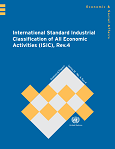
Published in 2008.
ISIC is the international reference classification of productive activities. Its main purpose is to provide a set of activity categories that can be utilized for the collection and reporting of statistics according to such activities. Since the adoption of the original version of ISIC in 1948, ISIC has provided guidance to countries in developing national activity classifications and has become an important tool for comparing statistical data on economic activities at the international level. Wide use has been made of ISIC, both nationally and internationally, in classifying data according to kind of economic activity in the fields of economic and social statistics, such as for statistics on national accounts, demography of enterprises, employment and others.
This fourth revision of ISIC (ISIC, Rev.4) is the outcome of a review process that spanned several years and involved contributions from many classifications experts and users around the world. This process resulted in an ISIC structure that is more detailed than the previous version, responding to the need to identify many new industries separately. The relevance of the Classification has been enhanced with the introduction of new high-level categories to better reflect current economic phenomena.
Previous versions:
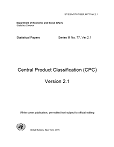
Published in 2015.
Not available in printed form.
The Central Product Classification (CPC) constitutes a complete product classification covering goods and services. It serves as an international standard for assembling and tabulating all kinds of data requiring product detail, including industrial production, national accounts, service industries, domestic and foreign commodity trade, international trade in services, balance of payments, consumption and price statistics. Statistics based on CPC Version 2.1 are useful in studying transactions in goods and services in detail and as a basis for developing lists of goods and services for specific purposes, such as price statistics surveys. It has broad acceptance as an international standard and facilitates the maintenance of constant categories of products.
Previous versions:
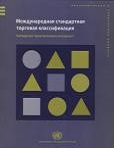
Published in 2007.
This publication provides codes for and descriptions of all of the 2970 SITC, Rev. 4 basic headings and corresponding HS07 subheading codes. In addition, in the three appendices are correspondence tables correlating the following: the subheadings of HS07 to the basic headings of SITC, Rev. 4; the basic headings of SITC, Rev. 4 to the basic headings of SITC, Rev. 3; and the basic headings of SITC, Rev. 3 to the basic headings of SITC, Rev. 4. Many countries and national and international organizations continue to use SITC for various purposes, such as for the study of long-term trends in international merchandise trade and aggregation of traded commodities into classes more suitable for economic analysis.
Previous versions:
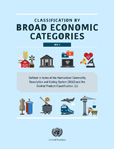
Published in 2018.
At its 13th session in 1965, the Statistical Commission recommended that data on broad economic categories of commodities be compiled to supplement summary data of imports and exports based the sections of the Standard International Trade Classification (SITC). Defined in terms of the basic headings of the SITC, the original BEC was issued in 1971. The current and 5th revision of BEC was carried out with the objective to better reflect current economic reality, to include services as well goods, and to introduce greater clarity and simplicity in the structure of the BEC, among others. Crucially, full separation was made between economic and end-use categories. The revision also takes the opportunity to introducing a new variable (specification dimension) to help in the analysis of global value chains.
Previous versions:
BEC Rev.3 (2001)
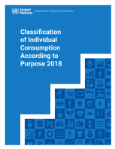
Published in 2018.
The COICOP 2018 publication is undergoing a final review. Users have pointed out a number of errors and inconsistencies that need to be addressed. Thank you to all for those inputs. The final review is not intended to result in structural changes, but will involve corrections and clarifications in articular in explanatory notes. We will publish the finalized structure and explanatory notes, before finalizing the complete publication.
The Classification of Individual Consumption According to Purpose (COICOP) is the international reference classification of household expenditure. The objective of COICOP is to provide a framework of homogeneous categories of goods and services, which are considered a function or purpose of household consumption expenditure. COICOP is an integral part of the System of National Accounts (SNA), but it is also used in several other statistical areas, such as: household expenditure statistics based on household budget surveys and the analysis of living standards; consumer price indices; international comparisons of gross domestic product (GDP) and its component expenditures through purchasing power parities; and statistics relating to culture, sports, food, health, and tourism.
Previous versions:
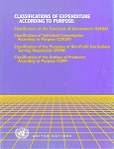
Published in 2003.
This publication presents four international economic classifications of expenditure according to purpose, COFOG, COICOP, COPNI and COPP, primarily designed to classify transactions undertaken by government, households, non-profit institutions and producers. COFOG is a revised and expanded version of an earlier United Nations document entitled Classification of the Functions of Government (Statistical Papers, Series M. No.70). COICOP, COPNI and COPP were recommended in the 1993 System of National Accounts as international classifications for data compilation and analytical uses, and are presented for the first time in this publication in full detail. These classifications may be used to classify data on purposes of expenditures for the compilation and analysis of statistics on national accounts, consumer price indexes, household and expenditure surveys, government finances, non-profit institutions and producers.
A new version of COICOP is now available see above.
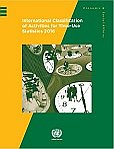
Published in 2021.
The International Classification of Activities for Time-Use Statistics (ICATUS) 2016 is a classification of all the activities on which a person may spend time during the 24 hours that make up a day. Its purpose is to serve as a standard framework for time-use statistics based on activities grouped in a meaningful way. ICATUS provides a framework with standardized concepts and definitions for the systematic dissemination of internationally comparable time-use statistics, regardless of the type of instruments used for data collection. ICATUS can be further used to guide the collection of time-use data or adapted into countries' classifications to reflect the national context and needs. ICATUS has been developed based on internationally agreed concepts, definitions, and principles to improve the consistency and international comparability of time use and other social and economic statistics. Reliable time-use statistics have been critical for (a) the measurement and analysis of quality of life or general well-being; (b) a more comprehensive measurement of all forms of work, including unpaid work and non-market production, and the development of unpaid household service work accounts; and (c) the production of data for gender analysis for public policies.
For more information, please visit the Time-Use Statistics website.
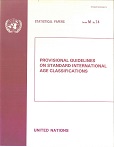
Published in 2003.
This publication sets out provisional guidelines on standard international age classification, as approved by the Statistical Commission at its twenty-first session, in 1981. The guidelines were developed on the basis of existing national practices and international recommendations concerning age classification and the comments made by the members of the Statistical Commission at its twenty-first session. Chapter I explains the purpose of standard international age classifications. Chapter II sets forth recommended standard international age classifications for the following: population; family formation, families and households; learning and educational services; earning activities and the inactive; distribution of income, consumption and accumulation; social security and welfare services; health, health services and nutrition; housing and its environment; public order and safety; time use; leisure and culture; and social stratification and mobility.
UNSD classifications
International coordination
Meetings and events







